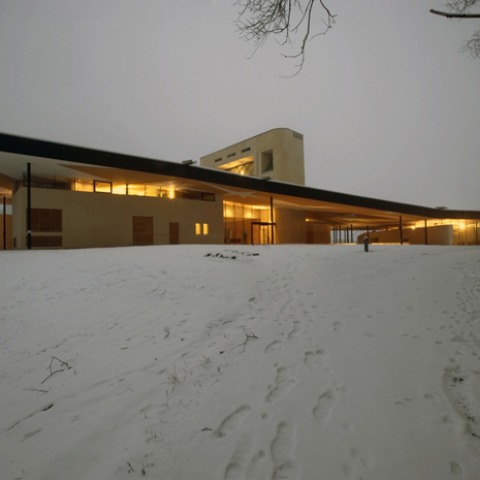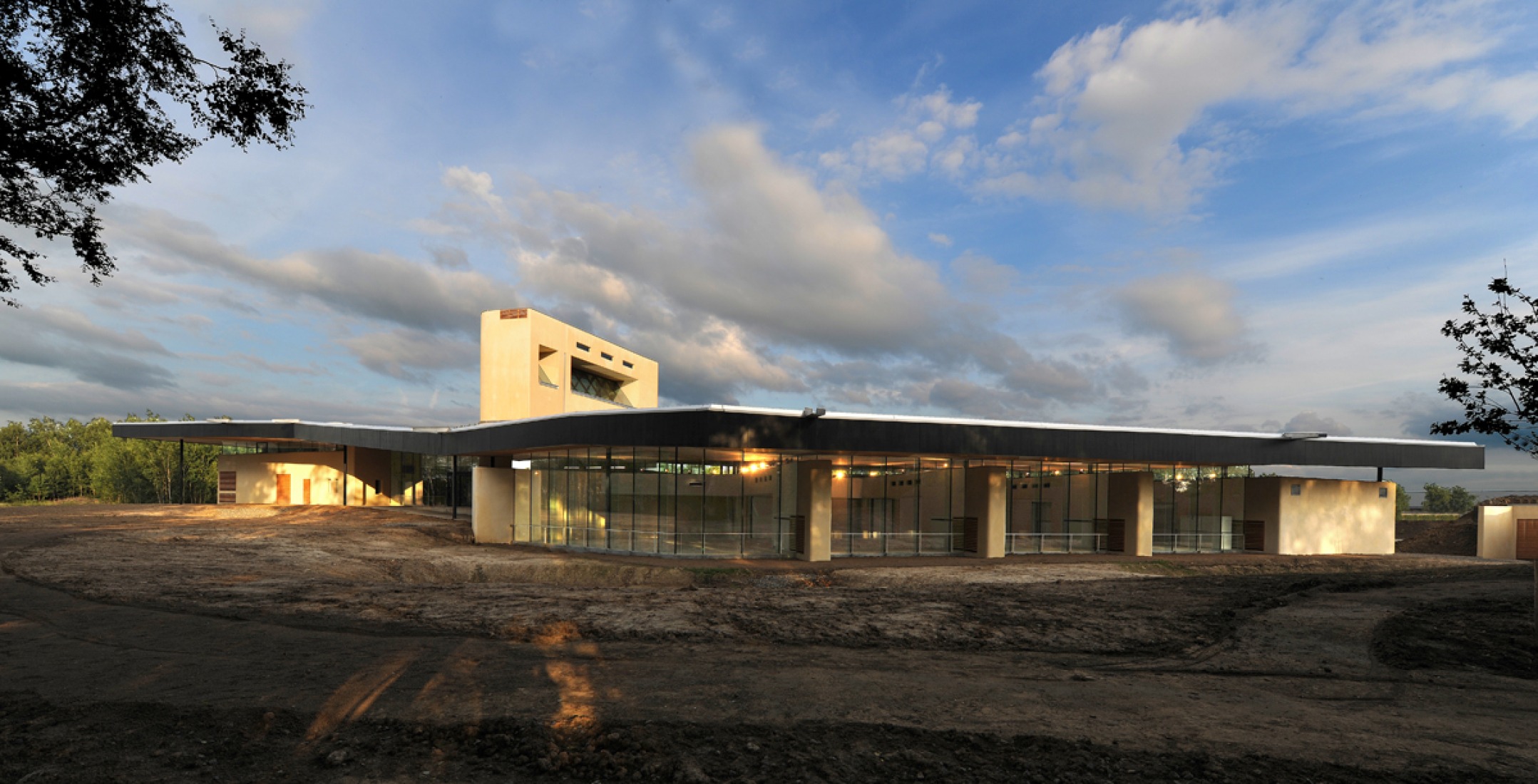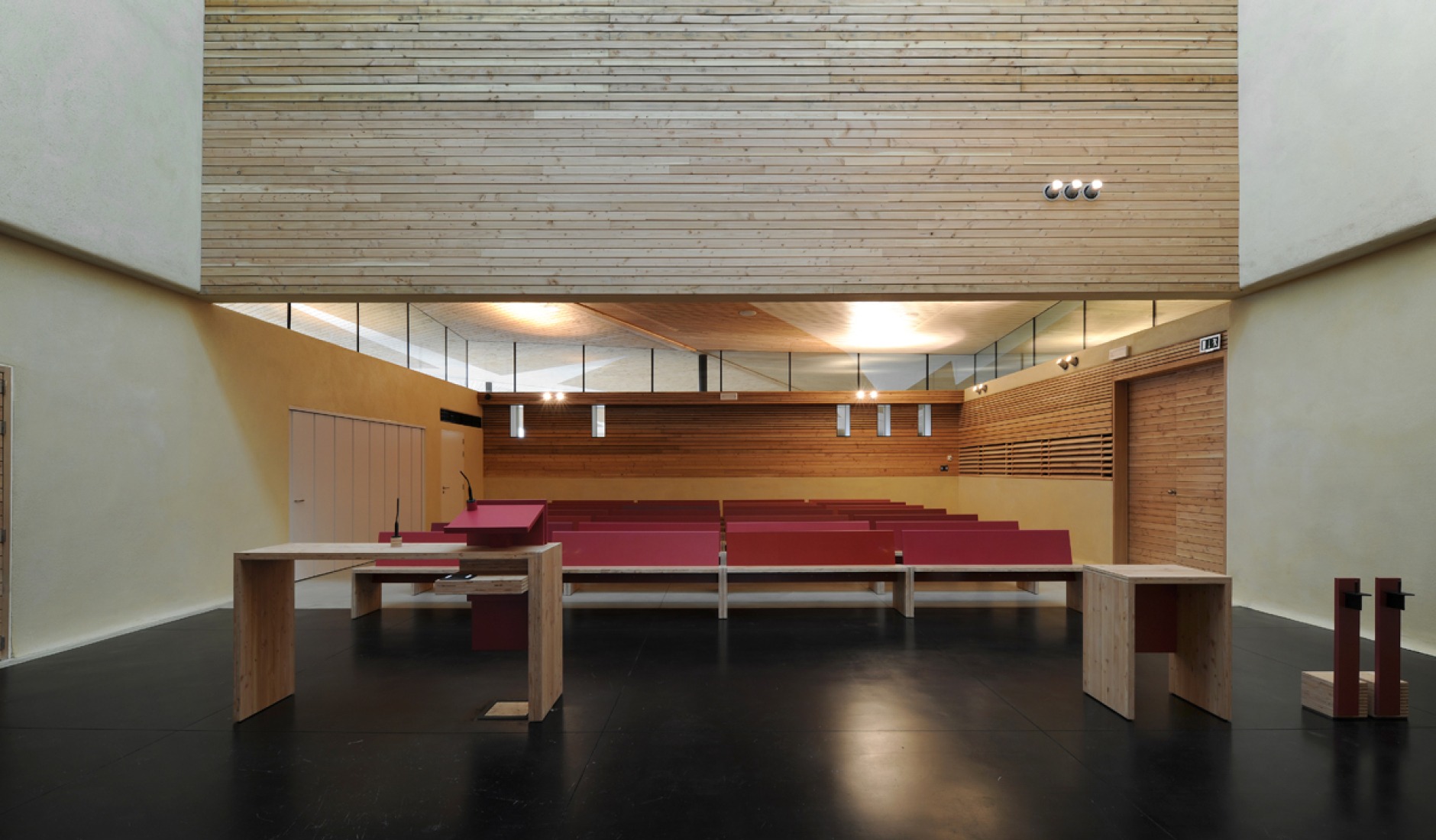Description of project by Dethier Architecture
In dialogue with the landscape.
Dethier Architectures was awarded this project after a European-wide invited competition. We developed a very specific concept for a funeral home and landscaped cemetery, built on a former clay extraction site.
The natural environment as inspiration.
The landscape guided the architectural composition of the funeral centre. In the words of Daniel Dethier, "We designed an ensemble where individuals can come together, a place where feelings are nurtured by the relationship between the landscape, nature and the built volumes, which appear to emerge from the ground and organically find their place."
A harmonised composition.
The Welkenraedt funeral centre consists of two main structures that interconnect beneath a broad planted roof. The smaller of the two contains a cafeteria and associated dining areas, while the larger structure houses chapels on the ground floor, with offices located on the upper floor, and technical areas and cremation facilities in the basement. At the entrance to the site, set off to one side, a caretaker's residence blends with both the contours of the site and the formal aspects of the main building. Particular attention has been paid to the harmony of the volumes and their interconnections. The result – a feeling of balance and reassurance – is reinforced by the finishing of the concrete walls. Curves are a preferred means of expression, including in doorframes and the bases of walls. The tranquillity this affords is not antithetical to the communicative strength of the tower that emerges from the central building. The tower is used to conceal the chimneys of the cremation facilities, while providing natural ventilation to the chapels and bringing light down into the building's core.
Interior atmosphere.
In the public areas, we find the same skilful blending of technical aspects and detailed finishings, whether in flooring, wrought iron or joinery work. Moreover, the entire structure has been fitted with a sophisticated system for providing natural ventilation to both buildings. The layout emphasises the flexibility of the interior spaces. In the reception area, the passageway design and the moveable partitions mean that reception rooms can be isolated one from another or joined together. The placement of the chapels offers a similar level of flexibility, in this case by the introduction of rotating partitions between the three spaces, which may be combined. The main chapel opens onto the outside, while the intermediate and smaller areas are more private and are bathed in light coming from above. The acoustics were specifically designed to give the chapels a more solemn feeling through an extended reverberation time, while offering greater intimacy in the more absorbent reception zones. The cremation facilities, which are also accessible to the public, were given a very specific design.
An extension of nature.
One of the cornerstones of the project is the integration of the site into the natural environment. This includes the design of the structure, which incorporates vast floor-to-ceiling windows that give onto the outside. The concept of transition is a key architectural element, which is underscored by the impression that the buildings are rising from the earth. It can also be seen in the design of the roof, which "unfurls" in harmony with the topography and continues out over the footprint of the buildings, providing shelter for open-air zones in continuity with the environment. Views of the landscape thus extend throughout the buildings, which organise, reveal and bring together the various peripheral spaces. The natural site where the funeral centre is located consists of more than six hectares of land, three of which were built. The site was developed very carefully, working in close collaboration with landscape architect Erik Dhont. Upon entering the centre, circulation is organised in a functional, sensitive manner – access roads lined with banks of indigenous species lead visitors to parking areas. In addition, the entire landscape design was conceived to bring together the site's various functions (cemetery, scattering lawns, rest areas, crematorium and the original natural site with its specific biotope) into a carefully-composed whole where each area appears to have been placed there in a simple, natural and "serene" manner. The various types of burial places have also been thoughtfully designed, along with the furnishings and signage. In keeping with his approach of artistic integration, which he has advocated since the very beginning of his career, Daniel Dethier asked Nicolas Kozakis to join his team in the design process. His participation resulted in design elements that appear on the centre's ceiling and on the walls of the cremation ovens.
CREDITS.-
Main architect.- Daniel Dethier.
Team collaborators.- Nicolas Kozakis (artist), Erik Dhont (landscape architect).
Date.- 2012 (completion), 2010 (study).
Surface.- 3.290 m² (inside area), 28.944 m² (outside area).
Site.- Welkenraedt, Belgium.











































